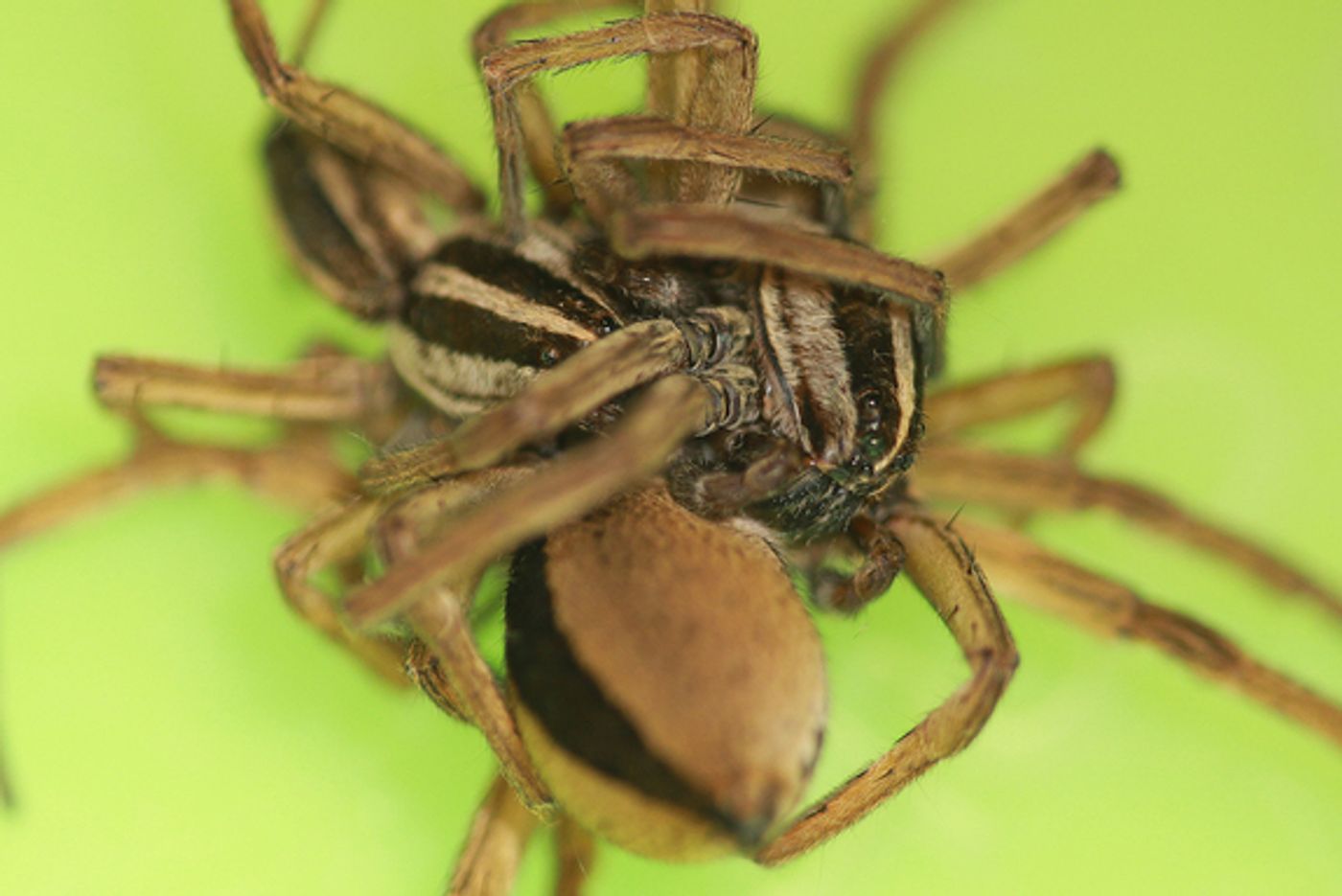Study Reveals Why These Spiders Have Threesomes
Threesomes may be derived from nothing more than sexual pleasure for the human species, but for some other species on the planet, it may be required to increase the odds of survival.
According to a study that will soon be published in the Journal of Arachnology, some male spiders may be caught mating in groups of threes simply to avoid being eaten by the female.
Image Credit: Matthew Persons
In these threesome-based mating encounters, one male will typically court a female and then another male will drop in and crash the party. The behavior, which was noticed first in Wolf Spiders by professor Matthew Persons of Susquehanna University in Selinsgrove, Pennsylvania, seems to be widespread for the species.
Despite being unable to believe his eyes at first sight, Persons repeatedly caught Wolf Spiders mating in groups of threes, night after night, almost as if it were normal for them. He documented their behavior and positions, and even snagged photographs where he could.
While the exact reason for why this occurs is unknown, the current theory is that there’s an evolutionary advantage to triad-based mating events in spiders. If this still sounds like a lame excuse to have a threesome, then just keeping reading...
Since the females can often be cannibalistic when they aren’t pleased with the mating results, having two males to divide the work amongst themselves has the potential to reduce energy expenditure among the two, as well as a greater likelihood of survival from the female’s cannibalistic behavior.
While everything sounds like a win/win for the male spiders so far, there are also some admitable downsides to this kind of activity, such as a decreased chance of reproductive success and extremely prolonged mating times.
Persons reportedly observed numerous times where the spiders weren’t successful in planting their seed, either because of failed insertion attempts or because of the other male getting in the way. This meant a lot of energy was wasted at failed attempts.
The other con, which involves the prolonged mating time, often meant that the threesome-based spider mating attempts lasted two to four times longer (as long as four hours) than a one-on-one mating attempt would, which left the groups of mating spiders open to predators for longer periods of time.
While it seems like there are some pretty big trade-offs for the chance to escape cannibalism, it would seem that the commonplace behavior has withstood the test of time. What may sound taboo in the human world is certainly a common practice in the spider world.
Whether or not this is a common activity for all species of spiders remains to be seen; this study only documents the Wolf Spider, which is a very specific type of spider.
Source: Live Science









